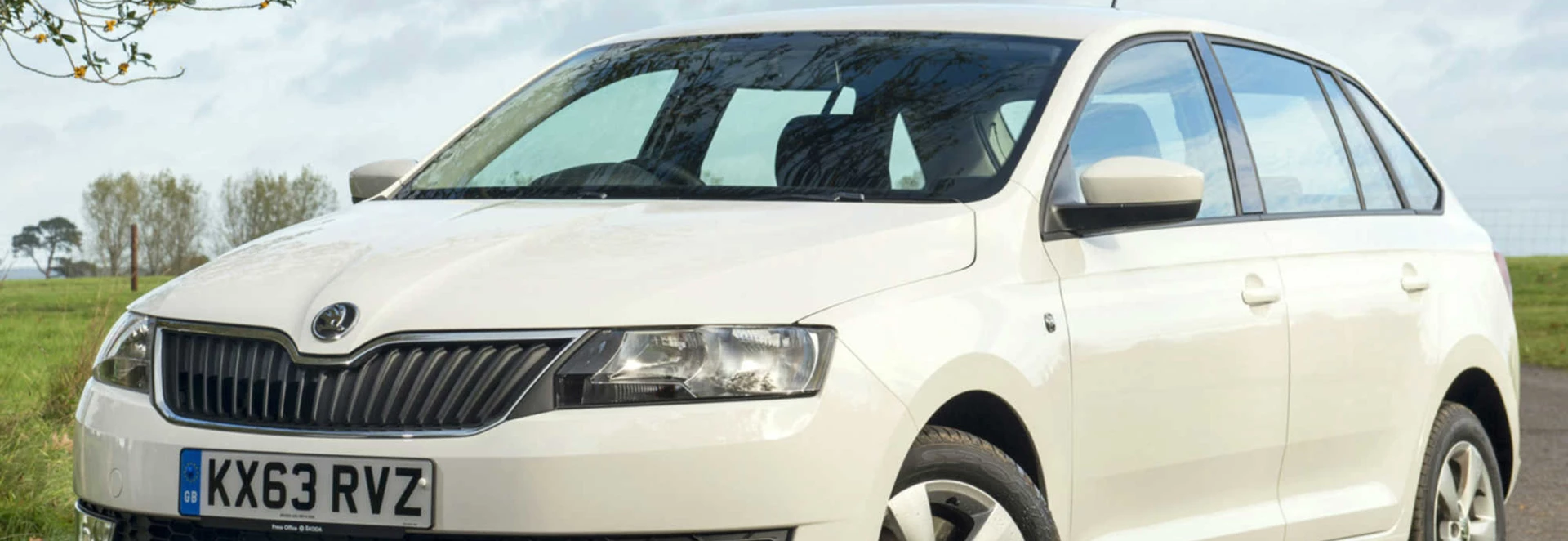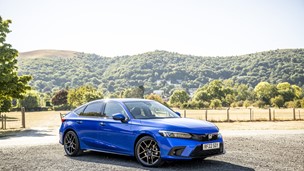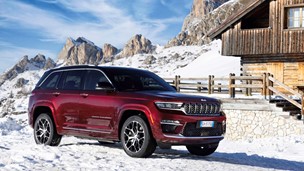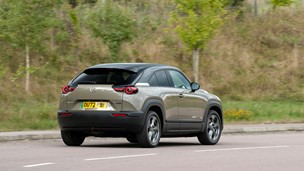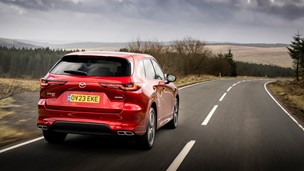The Skoda Rapid Spaceback is designed in a way that’s far closer to the look of a traditional family hatchback, when compared to the original saloon-like Rapid launched back in 2012.
The Spaceback, however, actually uses a modified station wagon body with a shortened rear over-hang. Even so, Skoda does not describe the Spaceback as an estate car, and it’s pitted more against traditional family hatchbacks.
Skoda’s aim with the Rapid Spaceback is to offer a compact car with estate-level practicality for young families on a tight budget.
The competition includes the Vauxhall Astra, the Volkswagen Golf and the Ford Focus, as well as similarly affordable hatchbacks including the Kia Cee’d and Hyundai i30. Can the Spaceback mean a Czech mate for its rivals?
Performance
Available for the Rapid Spaceback are a couple of 1.6-litre TDI diesels, a 1.2-litre TSI petrol unit and a 1.4-litre TSI petrol unit.
Units are mated to either a five-speed manual gearbox or a smooth-shifting seven-speed DSG automatic ‘box.
The 1.6-litre TDI diesel engine can offer 88bhp, propelling the car from 62mph in 12.1 seconds with a top speed of 113mph when using the DSG ‘box. While these figures make for decent reading, in reality, the car feels slow, even if the figures suggest speed is on a par with leading contenders.
Put your foot down and this iteration of the Spaceback is a tad sluggish to pull away, thanks to a small delay between the DSG ‘box reacting to the engine kicking in.
Once up to speed, it holds its momentum, but if you need to overtake slower traffic, you’ll need to drop it down a cog or two by using the paddle shifters to ensure there’s adequate performance. It’s a similar story even if you go with the 103bhp version of the TDI diesel.
The 1.2-litre TSI, which can offer 85bhp or 104bhp, plus the 120bhp 1.4-litre TSI feel much spritelier but are less efficient than the diesels. We’d recommend them for drivers with low to medium annual mileages.
Ride and Handling
Purists will be better off with the Focus or the VW Golf, as they feel more connected to the road.
On the twisty stuff, the Spaceback is competent but it’s some way off class leaders such as the Ford Focus hatchback. Still, for buyers of this car, pure fun and driving dynamics will probably not be number one on the list. Purists will be better off with the Focus or the VW Golf, as they feel more connected to the road. A fair number of rivals are also more refined and cope better with poor quality roads compared to the Rapid Spaceback. Driving the Spaceback does come with some plus points. The steering is smooth and it’s comfortable for long motorway journeys thanks to softly sprung suspension.
Interior and Equipment
Skoda has previously used the name Rapid for cars it made during the 1930s and then later in the 1980s.
The Skoda Rapid Spaceback feels reasonably equipped in the basic S trim and from SE trim upwards it’s loaded with kit. Highlights include six loudspeakers, 15-inch alloys, three-spoke leather steering wheel with controls for radio and telephone. Further features include rear parking sensors, body coloured mirrors/handles, cruise control, front centre armrest, front fog lights, glovebox, hill hold control, trip computer, rear electric windows, tinted glass and Bluetooth. In addition to all of this, our test car was also fitted with five optional extras including a touchscreen sat-nav with DAB digital radio (£550), temporary steel spare wheel (£75), climatic aircon (£300), silver metallic paint (£495) and textile floor mats (£75). Seating at the front and rear feels comfortable and spacious. The Rapid Spaceback should be able to seat up to four adults without trouble. The boot measures at 415 litres which is actually far less than the hatchback version of the Rapid, which offers 550 litres. Still though, that figure comfortable surpasses the likes of the Focus and the Golf, with the latter offering 380 litres.
Cost
The Rapid Spaceback’s pricing generally undercuts the likes of the Kia Cee’d and Hyundai i30. However its main rivals can offer fuel efficiency and emission figures which are similar if not greater than the Skoda.
The diesel engines make more sense for buyers prioritising efficiency. On average, the 88bhp TDI DSG model will return up to 62.8mpg and emits 118g/km of CO2 emissions. That’s only slightly less efficient than the manual iteration with 64.2mpg and 114g/km respectively. The most frugal choice is the 1.6-litre TDI Greenline at 99g/km CO2 and 74.3mpg. Our favourite 1.2-litre TSI engines range from 114g to 125g/km CO2. The 1.4-litre TSI has the worst running costs, with CO2 emissions of 134g/km and official fuel consumption of 48.7mpg. The Rapid Spaceback’s pricing generally undercuts the likes of the Kia Cee’d and Hyundai i30. However its main rivals can offer fuel efficiency and emission figures which are similar if not greater than the Skoda.
Our Verdict
Skoda can do no wrong at present: its cars keep getting better and while the Rapid Spaceback isn’t its best model, that’s not to say it’s a bad car. The engine feels a tad underpowered and the DSG ‘box could be better synced, but otherwise, this model is a practical choice. Our advice would be to choose one of the more powerful petrol engines, even if they aren’t the most efficient in the range. If you have a large enough budget, established hatchback names like the Focus and Golf are more accomplished. Closer priced alternatives including the decent Cee’d and i30 are also good alternatives, but the Rapid Spaceback does undercut them for pricing. If you need some extra practicality then the Spaceback represents a decent proposition.
